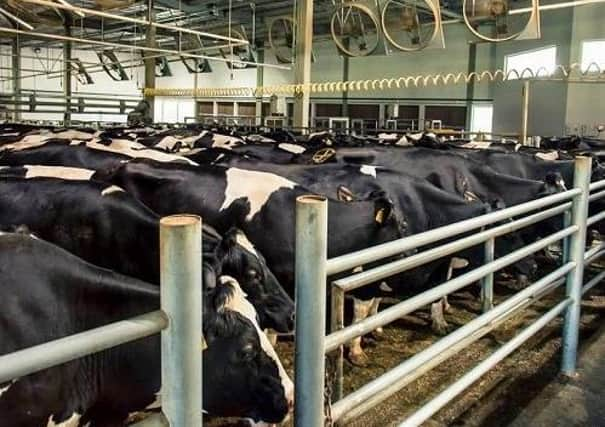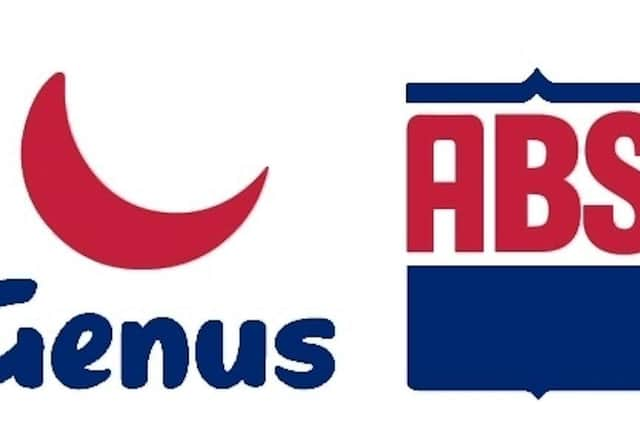Heat stress in dairy cattle taking the heat out of the summer


According to the Met Office this required three key factors: a warm evening the night before (15⁰C recorded at Killowen on the coast), lots of sunshine and lastly very little breeze!
These factors are hugely significant when considering heat stress in cattle with many contributing factors highlighted by the Met Office report - ambient heat, humidity, local air movement and absorption of radiant energy (sunlight).
Advertisement
Advertisement
While cows are quite tolerant, they are heat stressed at a temperature that most of us find comfortable. Their thermoneutral zone is in the range of 4⁰C to 21⁰C. So we can’t depend on when we are rolling up our sleeves or choosing to turn on our air conditioning in the cab or car to know if our cows are heat stressed. Cows are susceptible to the combined effects of both heat and humidity and to account for these we tend to use the Temperature Humidity Index (THI) which adjust temperature to account for the impact of high humidity to describe the climate within cattle sheds. Cow behaviour and performance are impacted around a THI of 68, whereas we don’t experience mild heat stress until THI 80, by which stage cows are experiencing moderate to severe heat stress with up to 3.5 litres of milk lost per day and reproductive losses including reduced oestrus behaviour, impaired conception rates and increased risk of abortion.


When cows experience heat stress they attempt to increase heat dispersion and as they don’t sweat efficiently, they try to utilise evaporation by increasing blood flow to their skin or in extreme situations they begin panting. To assist with this evaporation, cows will often stand, rather than lie down in cubicles, they may seek fresh air and often are seen to “bunch up” at the ends of sheds. Unfortunately these activities redirect cow’s production energy to thermal regulation and increased standing times can result in increased risk of poor mobility due to prolonged standing times, often the effects of this are not seen until 2-3 months after the warm weather and risk not being associated with the increased risk of prolonged standing.
In addition, when heat stressed, cows will change their behaviour to reduce activity and change their feeding patterns, often reducing dry matter intakes by 10-30%. This can result in sub-acute rumen acidosis as cows reduce their dry matter intake and consume lower proportions of forage. Rumination therefore decreases and less saliva (a source of bicarbonate) is produced. All of this results in less feed conversion efficiency, reduced yield and often large drops in milk butterfat percentages.
So what factors can we influence to reduce the effects of heat stress in our dairy cattle? Think of three main factors: 1. Shade, 2. Airflow, 3. Water.
Advertisement
Advertisement
All cows require shade, this is just as important over any holding pens as it is at grass. Ideally cows should have a minimum of 4.2m2 at a minimum of 4.2m when considering shade height.
When considering natural means of ventilation, many people look to adapt cattle buildings by increasing the ridge opening, a rough rule of thumb is that the distance between the ridge tiles should be 5cm per 3m width in the building. You should also consider if there is any vegetation around the building acting as a wind shadow preventing air moving into the building. When investing in fans to move air through buildings they should be spaced no more than 10 times the diameter of the fan and ideally angled to maximise airflow moving across cows backs when lying in cubicles, aiming for 3.1m/second. Inspite of all of this, if the shed is overstocked to cubicles or feed face (minimum 75cm per cow) or water trough space (10 linear cm per cow) the first step should be to consider how to depopulate the shed. Always consider using a ventilation specialist when considering investing in fans and cooling systems and remember if you have rubber matting and a fan on in the parlour, your cows will require that in the parlour and collecting yard also!
When considering feeding strategies consider reducing fermentable energy in the ration and utilising inert fats. Slowly shift feeding to twice per day at the coolest parts of the day - very early in the morning and late at night. Increasing the frequency of bunk push outs and clean outs is vitally important especially if adding water to rations to optimise the dry matter of the ration to improve intakes as this can increase the rate of food spoilage.
Management practices to deal with heat stress in cattle will often be very farm specific and can involve some relatively inexpensive fixes through to investments in environmental cow cooling systems involving mechanical ventilation. We continue to see ongoing rises in temperatures from May through to August each year with increasing seasonality within calving patterns due to drops in conception rates during summer year on year. For many dairy farmers today the question is not if, but when, will farms need to take action to take the heat out of the summer for their cows.